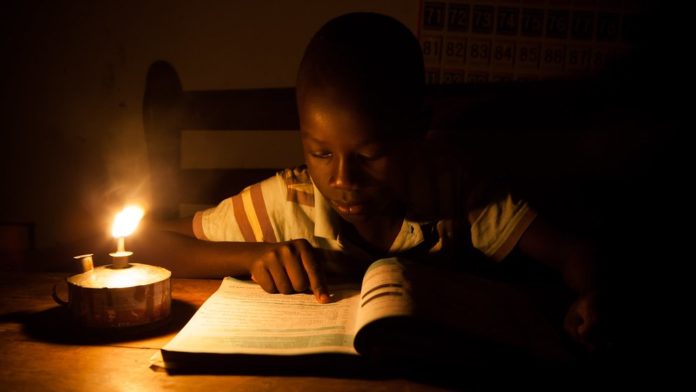Some 600 million people live without electricity in Sub-Saharan Africa, and many have no choice but to rely on burning kerosene for lighting. This inefficient lighting source is dangerous for both the environment and human health through its toxic fumes — not to mention being a major fire hazard.
The human cost is enormous: around 400,000 die every year from exposure to fumes. According to the WHO, living in a house with a single kerosene lamp is equivalent to smoking 40 cigarettes a day. What’s more, because kerosene is a dirty fuel, that one lamp also releases over a tonne of carbon into the atmosphere every five years.
Adding to the list of cons, kerosene lamps are also expensive, so struggling families are often forced to spend their limited finances on lighting.
Despite the human and environmental benefits, large-scale centralized power companies don’t always prioritize the power lines needed to power certain communities, especially if they are remote, small, or otherwise difficult to access. An alternative is to build local hubs using small-scale solar energy, and two Canadian companies are leading the way.
Two strategies to cover a broader customer base
Jaza Energy and M-Kopa market their solar solutions to communities in various countries, including Tanzania, Kenya, and Uganda. Both companies deal in distributed energy generation by providing localized, off-the-grid electricity that’s cheap and quick to implement. Although the two cover similar ground, their approach to sales and distribution is what sets them apart.
M-Kopa’s approach is akin to financing, as customers pay in instalments through their cell phones (usually around 50 cents a day). Within a year or two, the customer takes ownership of the solar system. Mobile payments are a far more widespread means of financial transaction in Africa, and many bypass traditional banks by using these apps for all their banking needs.
To date, M-Kopa has hooked up over 700,000 homes in East Africa, with approximately 500 new homes being added to the service daily. The carbon savings from their customer base are reportedly equivalent to 75-million hours of kerosene burning.
Jaza, on the other hand, is a smaller group focused on Tanzania, where they power over 2,000 households. Jaza operates through retail hubs that act as sales points and recharging stations for their solar energy packs. Each hub costs around $6,200 and takes less than a day’s work to set up, so they can be established in even the most remote communities.
With Jaza, customers can bring their removable batteries to the hub on a weekly basis to swap them out for a fully charged one. Each hub serves upwards of 100 households, and they are mostly run by local women.
Another key difference is that Jaza payments don’t involve mobile money payments, which actually broadens the scope of potential customers: “We see phone customers as early adopters and our customers as second-stage,” said Jeff Schnurr, Jaza Energy’s CEO to the Globe and Mail. “A lot of our customers don’t have very big balances on their mobile phone accounts or don’t have phones.
“Also, people with mobile phone accounts still have to walk somewhere to load up their phones, and our power is about one-seventh of the cost of competitors,” he adds. A weekly recharge with Jaza costs a household around 55 cents.
Both Jaza and M-Kopa’s business models have their place, with different advantages to either.
Solar delivers exponentially bigger benefits to Africa
For these under-resourced areas of Africa, solar is the gift that keeps on giving: one study showed that switching from kerosene to solar saves a family roughly $85 a year. These savings can in turn be spent on healthcare, education, and higher quality food.
Cheap lighting also means children can study at night, improving their academic performance. Schnurr has also hinted at potentially expanding telehealth services to remote communities through Jaza’s hubs.
“The cost benefits are overwhelming,” commented Steve Andrews from SolarAid to the Financial Times. “That’s the reason we think solar lights are going to change Africa in ways people can hardly imagine.”








































